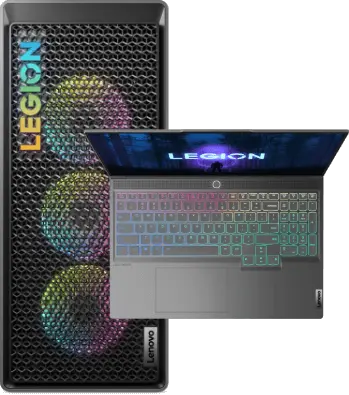Tips & Ideas for Streaming Your Gaming Action
Video game streaming, the practice of broadcasting your game action for others to enjoy, has rapidly transitioned from a niche interest to mainstream digital entertainment. Players with the right know-how regularly stream their gaming exploits live online, showcasing their skills, tactics, and personalities. But if you're not sure how game streaming works, how do you get started?
On one hand, video game streaming is easy—the software and streaming platforms are widely accessible, and there's a ready-made audience waiting to watch. We'll explain everything below. But if your goal is to become the next world-famous game streamer, you'll also need to know about marketing, promotion, and audience engagement. We'll explain that, too.
Many game streamers simply enjoy sharing their gaming experiences, while others do it for personal interaction and, sometimes, monetization. On the other side of the stream, viewers tune in to learn new strategies or just to enjoy the entertainment, streamer personalities, and sense of community.
Choose the Right Equipment
Every successful video game stream starts with a robust setup. Your gaming and streaming needs will determine the specifications required, so it's important to understand what to look for in your equipment.
Begin with a powerful PC or laptop. The processor should be potent enough to handle gaming and streaming simultaneously, so look for a chip with a high number of cores and threads, a high clock speed, and recent generation technology. You'll want at least 16GB of RAM for smooth multitasking while streaming (or up to 32GB for demanding games or if you will stream at very high resolutions).
A high-performance graphics card is essential—one capable of rendering your games smoothly while providing enough horsepower to encode your stream. Look for a card with a high number of CUDA cores or Stream Processors, high clock speed, and ample VRAM (video memory). A high-refresh rate gaming display won't significantly affect your streaming, but it can add to your personal enjoyment, and your monitor settings (such as a 16:9 aspect ratio, or whatever) will affect what your viewers see.
If you're gaming on a console, you'll need a reliable video capture card. Look for a device that can properly handle your console's output resolution, has low latency, and provides an easy way to connect your console to your PC for streaming.
The most entertaining streamers often give their own commentary, so consider investing in a quality microphone. Look for models with good sensitivity, low noise levels, and a frequency response range that covers the full range of human voice (around 80 Hz to 15 kHz). And if your stream will include a view of you playing, get a high-resolution webcam with a smooth frame rate, good low-light performance, and a wide field of view (helpful if you move around a lot or have multiple people on stream).
Select the Right Software
Software is the linchpin for broadcasting your gameplay online. OBS (Open Broadcast Software) is a favorite among the gaming community, featuring an array of customization and control options. Streamlabs, an OBS offshoot, offers a user-friendly interface with built-in alerts and widgets for interactive streaming.
XSplit, in contrast, offers seamless, easy-to-use streaming with what some users consider superior audio codec support. NVIDIA ShadowPlay is another smart choice, especially for those using NVIDIA GPUs, as it has minimal performance impact and an integrated FPS counter. For advanced streamers seeking professional-grade tools, Wirecast offers a multitude of features including scene transitions, live switching, and real-time video effects.
This is just a partial list, of course. The streaming software marketplace is highly active, with new products emerging regularly. We recommend that you use this list as a starting point—and let your own research identify the right set-up for you.
Set Up Your Streaming Account
Selecting the right streaming platform can be instrumental in the success of your gaming stream. Each platform has its unique strengths and features that cater to diverse needs and audiences.
Twitch, the titan of video game streaming, is arguably the most popular platform. It boasts powerful monetization options like channel subscriptions and Bits (a form of virtual currency viewers can use to support streamers). Twitch's active user community also allows streamers to engage directly with fans through tools like chat, raids, and channel points. For example, professional Fortnite player Ninja, who streams exclusively on Twitch, has used these features to build an audience of over 16 million followers at the time of this writing.
YouTube Gaming, integrated with YouTube itself, leverages the platform's vast user base and sophisticated algorithm. Streamers can gain visibility by complementing their live streams with regular video content, such as game tutorials, highlights, or commentary videos. PewDiePie, one of the biggest YouTubers globally, regularly shares his gaming content with 110 million subscribers, exemplifying how you can utilize YouTube's features to reach a massive audience.
Facebook Gaming provides robust audience discovery tools and easy integration with your Facebook social network. It's a solid choice for leveraging existing social circles or those seeking to expand their reach through Facebook's numerous user groups.
Kick, a newer entrant in the game streaming market, has been making waves with an intuitive interface and user-centric policies. Kick's stated commitment to give streamers greater control over their content and revenue could make it an increasingly attractive option for gamers seeking what some call a more “equitable” streaming environment. It's still relatively new, though, so time will tell.
Optimize Your Streaming Settings
Mastering streaming settings is a critical aspect of high-quality video game broadcasting. Bit rate affects your stream's visual quality, with a higher bit rate providing clearer game imagery. However, a high bit rate requires a strong upload speed. If your internet connection can handle it, aim for a bit rate of 4500 to 6000 Kbps for 1080p streaming.
Frame rate and resolution are equally important. Streaming at 1080p and 60 frames per second (fps) is considered a sweet spot by many gamers as it balances quality with the average viewer's internet capabilities.
Another tip: choose hardware encoding for less CPU load—provided your GPU is up to the task. And be sure to fine-tune the audio settings to balance game sound with your commentary. For example, if you're trying to teach others how to play a game, you can opt for a lower game sound level so viewers can clearly hear your insights.
Build a Strong Brand and Community
Creating a personal brand for yourself as a game streamer is important if you hope to stand out in the crowded gaming landscape. It's a part of streaming that's still emerging, however—the top gamers seem to always be experimenting with different brand identities.
One way to start is by designing a unique logo that will immediately identify your stream and distinguish it from others that viewers might be watching. To make your stream more professional in appearance, use Adobe Spark, Canva or other tools to create effective stream overlays—for example, the location of your chat window, webcam view, etc. should remain consistent. Together, these steps will help establish your brand and ensure viewers recognize it when they see it.
And remember that viewer engagement extends beyond the game action you're streaming. Try to regularly interact with your audience through chat during live streams and on regular social media platforms when you're not actively streaming. You can build relationships and network with other gamers and streamers by joining only streaming communities, attending gaming conventions, and participating in gaming tournaments.
Create Compelling Content
Compelling and engaging content is a must for any successful video game streamer. And it's not limited to your gameplay. Much depends on how you present and enhance your stream.
Entertaining commentary is a cornerstone. A streamer like DrLupo, for instance, earned fame not just for their skill at Fortnite and Valorant, but also humor, storytelling, and a strong rapport with viewers. Analyzing game strategies can likewise add depth to your content, as many viewers tune in exclusively to learn and improve their own gameplay. A streamer such as Purge, for example, provides detailed Dota 2 guides and analyzes professional gameplay. Adding personal anecdotes or sharing experiences can humanize you to your audience and help form stronger connections. A notable example is Sweet Anita, a Twitch streamer who shares her experiences of living with Tourette's syndrome.
Special events, like charity streams or gaming marathons, can generate excitement and attract viewership. You can organize tournaments, themed streams (like retro gaming nights), or charity events to spice up your regular streaming schedule.
Collaboration is a potent tool for growth, too. By partnering with other streamers, you can cross-pollinate audiences and bring fresh perspectives to your stream. Streamer collaborations, like Among Us sessions featuring multiple streamers, have attracted millions of views.
Promote Your Stream
Relying purely on organic growth can be slow, but proactive promotion can ignite your stream's reach and engagement.
Leveraging social media platforms is one powerful method to attract new viewers. Twitter, in particular, is a hotspot for the gaming community, with popular streamers regularly sharing updates, engaging with fans, and announcing upcoming streams. Instagram, with its visual focus, is another ideal platform, especially for sharing highlight clips, behind-the-scenes pictures, or memes related to your stream. Reddit offers subreddits dedicated to almost every game and streaming topic imaginable. Posting useful content, engaging in discussions, or hosting AMAs (Ask Me Anything)—each of these steps can help establish your presence there.
Posting at peak usage times and using gamer-relevant hashtags are crucial for visibility. For example, use popular hashtags like #TwitchStreamers or #esports in your posts, or schedule your posts to coincide with popular gaming events. Participating in streaming communities on platforms like Discord is another powerful avenue for networking and gaining visibility. Many popular streamers have their own Discord servers where they build community by interacting with fans and sharing updates.
Collaboration, too, is an underutilized promotional tool. Consider participating in joint broadcasts or trading shout-outs to expose your stream to larger audiences.
Conclusion
Video game streaming can be thrilling, both for you and your viewers. While the task may initially seem daunting, remember that every successful streamer started from scratch, just like you.
With the right equipment, software, and a strategic approach, anyone can become a successful game streamer. So, gear up, set up your software, and start connecting with gamers worldwide!













